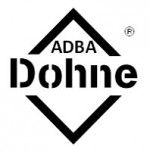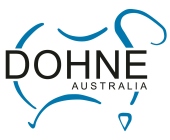Dohnes to play role in nation’s flock rebuild
July 25, 2016 – by Kim Woods Outcross Media
The self-replacing Dohne breed is set to play a major role in stabilising and improving the nation’s rapidly declining breeding ewe base.
Sheep industry consultant and Lamb Forecasting Advisory Committee member, Geoff Duddy, said the Dohnes improved weaning percentages were a major profit driver within the industry.
“We are down to 41 million breeding ewes nationally and are really at the crossroads,’’ Mr Duddy said.
“The only reason we have been able to keep up with export demand is weaning percentage and lamb survival has improved over the last four to five years.’’
The fact the Dohne was self-replacing limited biosecurity risks during the rebuilding phase, Mr Duddy said.
Speaking at the Global Dohne Conference on July 22, Mr Duddy said the dual-purpose breed had a huge ability to capitalise on changes in the wool, sheep meat and breeding ewe values.
He said Dohnes compared favourably to every other breed or crossbreed on gross margin returns.
Significant improvements in wool and trade lamb prices over the past 12 months had placed the Dohne into pole position.
Since 2002, values for 2-3 inch (5-7.5cm) Merino style skins have outshone crossbred sucker lambs by an average of $4.99 and older lambs by $5.90.
“This is a big factor why the Dohne does well on gross margins,’’ Mr Duddy said.
“We are now sitting at $12-$13 more for a Merino type skin over the traditional sucker lambs – it’s a big part of the income.’’
Mr Duddy, of Sheep Solutions, Yanco, NSW, said the plain bodied, open faced and bare breeched Dohne would continue to pressure the Merino industry on improved animal welfare.
He called for less reliance on mulesing in Merinos in the light of increasing activism.
Mr Duddy said sheep producers could expect a 10 per cent lift in production from hybrid vigour by crossbreeding with the Dohne.
He said Dohne ewes could be mated at 10 months of age, reducing the generational interval and increasing the speed of genetic gain.
“Scan them – if they haven’t joined and are excess to your requirements, they go into the breeder or slaughter market,’’ he said.
“A big catch cry in the industry is ewe efficiency, resilience, hardiness, the ability of the ewe to conceive, have lambs and bounce back.’’
Mr Duddy urged Dohne breeders to maintain a focus on ewe weight and efficiency, wool balance, post weaning and yearling weights.
“With the focus on post weaning weight, there is a potential flow on effect of a bigger mature ewe – that is something to keep an eye on.
“Eye muscle depth and fat depth have real impacts on the ewe progeny and their future reproduction.
“I implore the Dohne Breeders Association and industry to continue with the pedigree and performance recording.
“There are huge pluses there, not just on the stud side but also educating producers on selecting those traits which best suit their breeding objective and make them the most dollars.’’
Victorian sheep industry consultant Dr Graham Lean told conference delegates Dohnes stacked up well financially.
Dr Lean, Agrivet Business, Hamilton, used the GrassGro model to compare gross margins for Dohne enterprises with fine wool Merino and specialist prime lamb across high, medium and low rainfall environments.
In the high rainfall environment, the Dohne had a gross margin per DSE of $39 compared to fine wool Merino on $33 and prime lamb on $27.
In the medium rainfall zone, the gross margin for Dohnes was $41/DSE, dropping down to $32/DSE for fine wool and $31/DSE for prime lambs.
Dohnes also came out on top in low rainfall environments at $31/DSE compared to $25/DSE for fine wool Merino and $17/DSE for prime lamb.
Dr Lean said lambing percentages of 140 were required in a specialist prime lamb flock for it to be competitive with a fine wool enterprise.
“This analysis doesn’t mean Dohnes is a licence to print money but it’s a good start,’’ he said.
Dr Graham Lean has found Dohnes do stack up financially.












